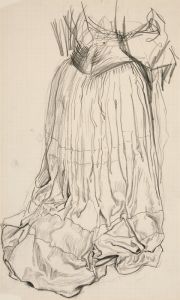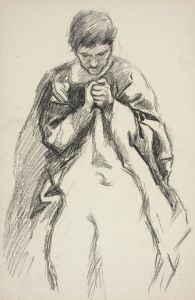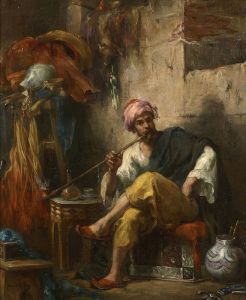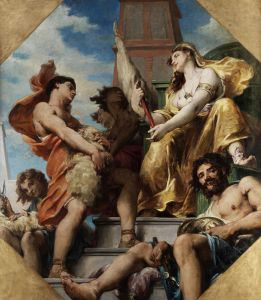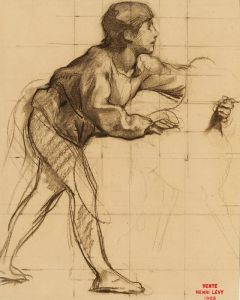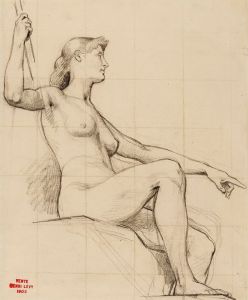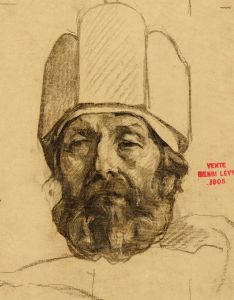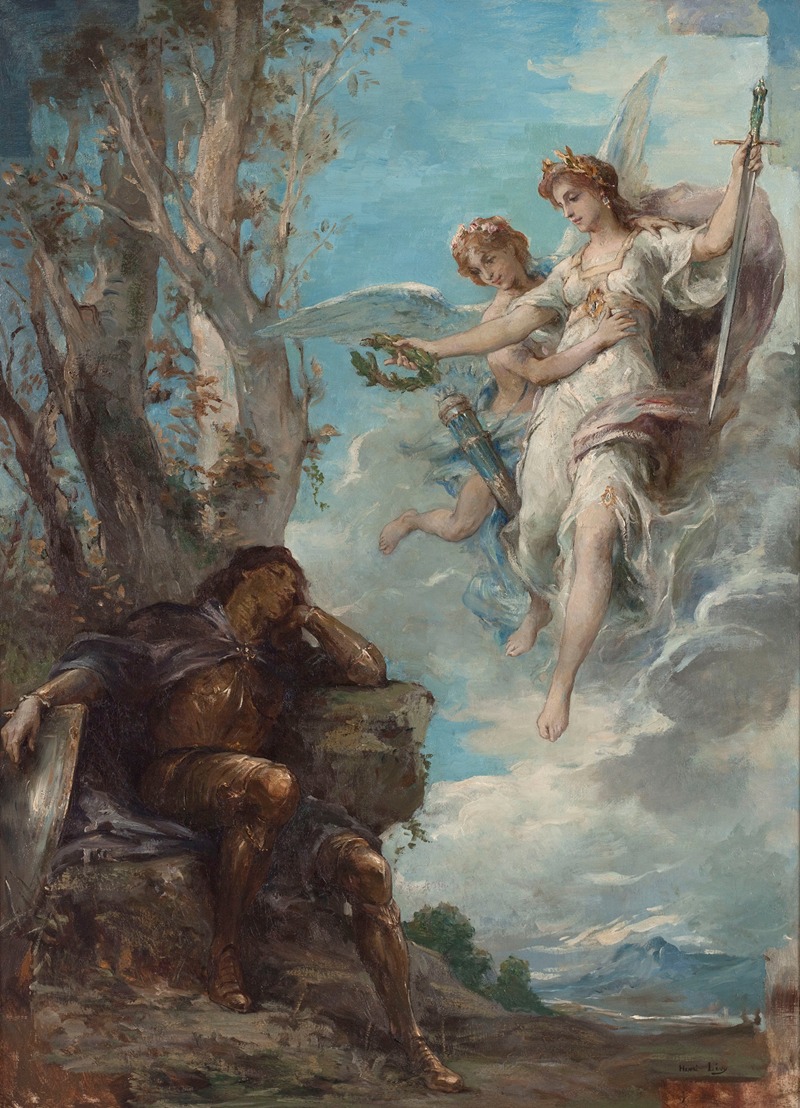
The Knight’s Dream
A hand-painted replica of Henri Leopold Lévy’s masterpiece The Knight’s Dream, meticulously crafted by professional artists to capture the true essence of the original. Each piece is created with museum-quality canvas and rare mineral pigments, carefully painted by experienced artists with delicate brushstrokes and rich, layered colors to perfectly recreate the texture of the original artwork. Unlike machine-printed reproductions, this hand-painted version brings the painting to life, infused with the artist’s emotions and skill in every stroke. Whether for personal collection or home decoration, it instantly elevates the artistic atmosphere of any space.
Henri Léopold Lévy's painting "The Knight’s Dream" is a notable work by the French artist, who was active during the 19th century. Lévy, born in 1840 and passing in 1904, was known for his contributions to the Symbolist movement, which often explored themes of mythology, dreams, and the subconscious. "The Knight’s Dream" is emblematic of these interests, capturing the imagination and the ethereal quality that characterize much of Lévy's work.
The painting depicts a knight, a common figure in romantic and medieval-inspired art, in a state of repose. The knight is portrayed in armor, suggesting readiness for battle, yet he is depicted in a moment of vulnerability and introspection. This juxtaposition is central to the painting's theme, exploring the duality of strength and vulnerability. The dream-like quality of the painting is enhanced by Lévy's use of soft, muted colors and delicate brushwork, which create an atmosphere of tranquility and contemplation.
Lévy's technique in "The Knight’s Dream" reflects his academic training and his mastery of traditional painting methods. He studied at the École des Beaux-Arts in Paris, where he was influenced by the classical techniques and the emphasis on form and composition. This background is evident in the precise rendering of the knight's armor and the careful attention to detail in the surrounding environment.
The setting of the painting is equally significant, as it contributes to the overall mood and narrative. The knight is situated in a serene landscape, possibly a forest or a garden, which serves as a metaphor for the inner world of dreams and imagination. This setting is typical of Symbolist art, which often uses nature as a backdrop to explore deeper philosophical and psychological themes.
"The Knight’s Dream" can be seen as a reflection of the broader cultural and artistic movements of Lévy's time. The late 19th century was a period of great change and innovation in the arts, with movements such as Symbolism challenging traditional notions of representation and meaning. Artists like Lévy sought to move beyond the literal and the realistic, instead using their work to explore the intangible and the mystical.
While specific details about the provenance and exhibition history of "The Knight’s Dream" are not widely documented, Lévy's work in general was well-received during his lifetime. He exhibited at the Paris Salon, a prestigious venue for artists of the period, and his paintings were appreciated for their technical skill and imaginative content.
In summary, "The Knight’s Dream" by Henri Léopold Lévy is a significant example of 19th-century Symbolist art. Through its depiction of a knight in a dream-like state, the painting explores themes of introspection, vulnerability, and the intersection of reality and imagination. Lévy's skillful technique and his ability to convey complex emotions and ideas through his art continue to be appreciated by audiences today.







